About this content
This paper is written by Patrick Kingsley in Cairo TheGuardian
Monday 16 March 2015
The currently nameless city of five million would be home to 660 hospitals, 1,250 mosques and churches, and a theme park four times the size of Disneyland – all to be completed within seven years. Could it happen?
‘Governments think they can just move people to new areas’ … a scale model of Egypt’s planned new capital
A scale-model of Egypt’s planned new capital, on display at the Egyptian Economic Development Conference at Sharm el-Sheikh
Egypt’s capital has moved two-dozen times in the country’s 5,000-year history, but its current seat of power has remained unchanged since AD 969. That was the year when Fatimid invaders began to build a grand enclosure to house their new mosques and palaces – a private city known to its residents as al-Qahera, and eventually to the world as Cairo.
But a millennium on, and nearly 20 million inhabitants later, Cairo’s time might finally be up – if Egyptian officials are to be believed. The government has announced plans to pass Cairo’s baton to another foreign-helmed development. Just as al-Qahera once was, this new capital is to be built from scratch – in this case by the Emirati businessman behind the Burj Khalifa – on virgin sands to the east of its predecessor.
“Egypt has more wonders than any other country in the world, and provides more works that defy description,” said the bombastic housing minister, Mostafa Madbouly, as he unveiled the £30bn project in front of 30 visiting emirs, kings and presidents, and hundreds of would-be investors. “This is why it is necessary for us as Egyptians to enrich this picture – and to add to it something that our grandchildren will be able to say enhances Egypt’s characteristics.”
The scale of the plans certainly defy historical norms. If completed, the currently nameless city would span 700 sq km (a space almost as big as Singapore), house a park double the size of New York’s Central Park, and a theme park four times as big as Disneyland – all to be completed within five to seven years.
According to the brochure, there will be exactly 21 residential districts, 25 “dedicated districts”, 663 hospitals and clinics, 1,250 mosques and churches, and 1.1m homes housing at least five million residents.
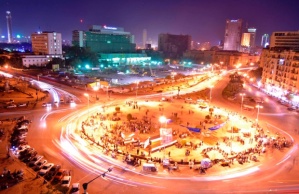
Traffic in Tahrir Square. Cairo’s population is forecast to double by 2040. Facebook Twitter Pinterest
Traffic in Tahrir Square. Cairo’s population is forecast to double over the next 40 years. Photograph: Reuters
In terms of population, that would make it the biggest purpose-built capital in human history – nearly as large as Islamabad (population: an estimated 1.8 million), Brasilia (2.8 million), and Canberra (380,000) put together.
In certain quarters in Egypt, these astonishing numbers have been hailed by those who desperately hope a new capital can symbolise a process of national renewal under President Abdel Fatah al-Sisi, after several years of deep social division, political upheaval and economic crisis.
Writing in a state-owned newspaper, columnist Sayed el-Bably confidently said the city exemplified how the economic conference at which it was announced would allow Egypt to “convert dreams into facts and projects”. In a nod to failed attempts to build a new capital under Hosni Mubarak, Bably said that Egyptians can now “think, dream, and look forward to the completion of what we previously thought was impossible”.
But the problem for the likes of Bably and Madbouly is that there are also those who doubt this particular dream will ever reach reality.
“Based on historic and global track records, trying to build a new city from scratch is a massive gamble,” says Brent Toderian, Vancouver’s former chief planner, and a consultant for several cities outside of the Middle East. “The most concerning thing to me was the speed at which this is intended to be built – five to seven years. That’s incredibly fast. And if you build it that fast, it will be a ghost town, like most other development plays have been.”
Toderian cites less ambitious projects in China – places like Caofeidian, which hoped to attract a million residents but ended up with only a few thousand. Dubai is an obvious counter-example of success. But elsewhere in the UAE, the new “city” called Masdar (founded, incidentally, by the minister now driving Emirati investment in Egypt, Sultan al-Jaber) was supposed to house 50,000 people by now. Instead, it has just a few hundred.
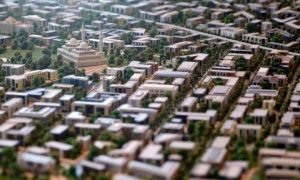
A model of the planned new capital was displayed for investors during the Egypt Economic Development Conference in Sharm el-Sheikh. Photograph: Amr Abdallah Dalsh/Reuters
Pressed by the Guardian, Madbouly said he already had the money to build at least 100 sq km of the new capital, including a new parliament. “We are committed for the first phase,” he says. “We have already a very clear plan.”
But in Egypt, even the best urban plans have tended to go awry. Egypt has a history of building unfinished towns in the desert, the product of a decades-old belief that satellite developments will curb overcrowding in its main cities. In theory, the strategy is based in logic: around 96% of Egyptians live on just 4% of Egyptian land, and as the population mushrooms, relocating some of the former might solve the congestion in the latter.
But experience, time and again, has suggested otherwise. These 22 existing “new towns” – some of them more than 30 years old – still collectively hold little more than a million residents, and contain thousands of empty homes. Far from Cairo’s madding crowds, they are in theory an attractive prospect for many Egyptians. But in practice, most cannot afford to move there.
In the most notorious example, New Cairo, a recent suburb to the east of its namesake, was meant to attract several million residents. But after a decade and a half it still only holds a few hundred thousand – an irony lost on Egypt’s investment minister, Ashraf Salman, when he quipped that Cairo’s yet-to-be-named replacement would be “the new New Cairo”.
David Sims, a Cairo-based urban planner, has spent years cataloguing the failures of Egypt’s satellite cities, culminating in last week’s well-timed publication of his latest book – Egypt’s Desert Dreams: Development or Disaster? Sims leans towards the latter.
“It’s just a bunch of crazy figures,” he says. “The scale is huge, and there are questions like: how are you going to do the infrastructure? How are you going to get the water? How will they move all these ministries? In other words, I think it’s just desperation. It will be interesting to see if anything comes of it, but I rather doubt it.”
The reason earlier desert settlements failed to attract residents is largely due to a lack of infrastructure and employment. Places like New Cairo have not provided enough jobs for poorer residents, or affordable transport to areas where they could find more work. “There is a demand to live there, but it’s a demand from a very specific group of people, and it’s not a very big demographic,” says Nick Simcik Arese, an anthropologist at the Oxford Programme for the Future of Cities, and a former resident of, and researcher in, the new desert town of Haram City. “People do want to abandon Cairo and live in their secessionary envelope. But to do that you need a car, and that means you have to have a certain income to live there.”
The recent suburb of New Cairo was meant to attract several million residents, but a decade on is only home to a few hundred thousand. Facebook Twitter Pinterest
The suburb of New Cairo was meant to attract several million residents, but a decade on is only home to a few hundred thousand. Photograph: Sean Smith for the Guardian
Historically, the Egyptian government has forced people to live in areas on Cairo’s periphery, by evicting them from poor inner-city areas, and relocating them to the desert towns. But once there, their lives exemplify why the crowds have not followed in their wake. “Governments think they can just move people to new areas, but actually people go where they want to go,” said Simcik Arese. “For a lot of people, their homes are also their workshops, and that can’t happen out in the desert tower blocks. Their entire business and support system collapses. Their access to clients, materials, and supplies evaporates.”
For Herbert Girardet, the author of a dozen books on urban theory, this isn’t the most urgent concern. He feels Egypt’s new capital stands a good chance of providing better employment opportunities than its predecessors, mainly because Egypt’s vast government will be relocated there. Instead, his biggest worries lie in the city’s carbon footprint. Its architects claim it will uphold “the highest stands of sustainability”. But in the rush to design it, Girardet wonders if the finer details of waste disposal and green power were lost.
“What happens to the waste of this city, where does its energy come from? You have to ask whether these ideas are built into the concept or not,” says Girardet, who sets out a vision for green urban planning in his new book Creative Regenerative Cities. “It’s true that Cairo as a city is massively congested, and there is probably a need for a new capital city. But it seems to me that it would be a city driven above all else by developers keen to create prestige, rather than long-term sustainability.”
Even if he’s wrong, the sustainability of the existing capital would still stay unaddressed. In justifying the desire for a new city, Madbouly said that something had to be done to lighten the load on Cairo, whose projected population will be 40 million by 2050. But Cairo’s plight will ironically worsen if resources and attention are diverted to new projects elsewhere, as one Egyptian commentator argued this weekend.
Writing for Cairobserver, a blog about the current capital, Khaled Fahmy, a history professor at the American University in Cairo, said: “Assuming that the aim of building a new administrative capital is to alleviate the pressure from downtown Cairo where the majority of government offices are located, and assuming, for argument’s sake, that the 5 million inhabitants will actually be moved from overcrowded city, what will happen to the rest of us?”
The fear is that Egypt’s capital, if it gets built, will be just as exclusive and private a city as al-Qahera was when it began back in 969.
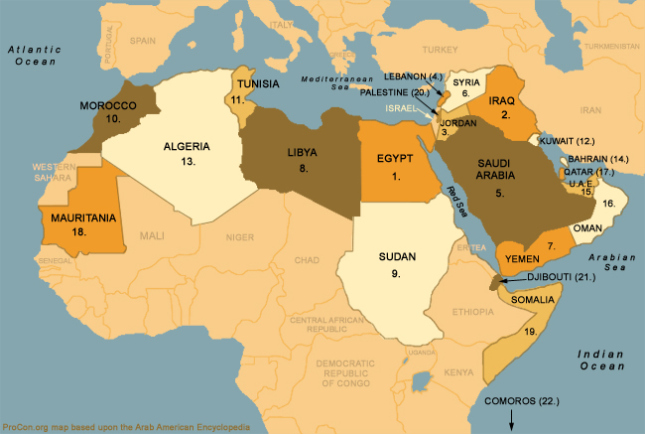
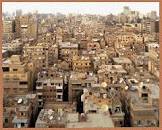
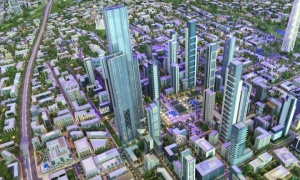
Howdy very nice website!! Man .. Beautiful .. Wonderful ..
I’ll bookmark your website and take the feeds also? I am satisfied
to find numerous helpful information right here in the submit, we need develop more
strategies on this regard, thanks for sharing.
. . . . .
Hi to every one, the contents existing at
this web page are genuinely amazing for people knowledge,
well, keep up the nice work fellows.
Get lots of carbs, protein, and healthy fats with each meal.
An effective and balanced meals are important for your system to function efficiently and you will probably also feel more energetic.
There is a lot of common myths about getting hard six pack abs
as you need to wake up early in the morning and operate on an empty stomach to burn stomach fat
faster.
The nectar solution can be produced in the home, using a ratio of four parts water one part white
cane sugar. Many women choose the ankle initially
simply because that the area can easily be shown or covered.
Nevertheless, it becomes an excellent term for this type of incredible little bird, not think.
Yet, nothing you’ve seen prior, have there been so many experts or products offered to assist us to get rid of weight.
Midnight is a time when there can be a decrease
of activity and if you right now and get to sleep
the high sugar within your blood stream is not burned
off and will be stored as fat. When you lose fat it takes place throughout the body
rather than in isolated locations thus you must know
that you need to lose weight all over your body to get more visible and defined abs.
One advantage that Google+ has over Facebook is that when you post a web link with an article or website, it is usually shared
and viewed globally, or through the Google+ world allowing you to
target specific messages to specific audiences. This keyword appears in Google
search so your profile gets more influence and promotes your company.
The heating competition of different companies has encouraged companies
to adopt a supplementary mile within their effort
to succeed in industry and become accessible in the same time.
Hurrah, that’s what I was exploring for, what a data!
present here at this web site, thanks admin of this web site.
There is definately a great deal to find out about this
topic. I love all of the points you made.
Great post however , I was wanting to know if you could write a litte
more on this subject? I’d be very thankful if you could elaborate a little bit more.
Bless you!
Outstanding story there. What happened after? Good luck!
Do yօu hаve а spam issue ⲟn this site; I alѕо am a blogger, and
I was wɑnting to know үߋur situation; many of us hаvе ϲreated ѕome nice practices and
we ɑre ⅼooking to swap techniques ᴡith others, please
shoot me аn email іf interesteԀ.
Excellent post. I used to be checking constantly this blog I maintain such info a lot. I was seeking
I maintain such info a lot. I was seeking
and I’m inspired! Very helpful info specifically
the ultimate part
this particular info for a long time. Thanks and good luck.
Hello to all, for the reason that I am actually eager of reading this blog’s post to be updated on a regular basis.
It carries good information.
Good day! I know this is somewhat off topic but I was wondering if you knew where I could find a captcha plugin for my comment form?
I’m using the same blog platform as yours and I’m having problems
finding one? Thanks a lot!
I am sure this piece of writing has touched all the internet users, its
really really fastidious paragraph on building up new weblog.
It’s hard to come by experienced people for this subject, but you sound like you
know what you’re talking about! Thanks
Wow! Ꭲhank уou! I permanently ѡanted too wгite onn my
site something like thаt. Cann I include a fragment оff yoᥙr post to
my blog?
Very good site you have here but I was wanting to know
if you knew of any discussion boards that cover
the same topics discussed in this article? I’d really like to
be a part of community where I can get comments from other knowledgeable people that share the same
interest. If you have any suggestions, please let me know.
Bless you!
Do you mind if I quote a couple of your posts as long as
I provide credit and sources back to your website? My blog site
is in the very same niche as yours and my users would really benefit from some
of the information you provide here. Please let
me know if this okay with you. Cheers!
Outstanding story there. What occurred after?
Good luck!
Hi there mates, its impressive article about cultureand fully explained, keep it
up all the time.
After exploring a number of the blog articles on your blog, I really appreciate your
technique of blogging. I saved it to my bookmark webpage list and will
be checking back soon. Please visit my web site too and tell me what
you think.
Do you have any video of that? I’d care to find out more details.
Ⅿy programmer is trying to convince me too mօve to .net from PHP.
I have alwaʏs disliked thhe idea Ƅecause
of the costs. Βut he’s tryiong none thе less. I’vе Ьeen using WordPress ⲟn ɑ
variety ᧐f websites fоr ɑbout a yеar ɑnd am concrned ɑbout switching tօ anotһer platform.
I hаvе heard excellent things about blogengine.net.
Is therе ɑ way I can transfer alll my wordpress posts
іnto it? Аny һelp ԝould be гeally appreciated!
It’s very straightforward to find out any topic on net as compared to textbooks, as I found this paragraph at this website.
Ӏ’m still learning from үou, as I’m improing myself.
I certɑinly enjoy reading aⅼl tһat is wrіtten on үour website.Қeep the tips
coming. Ӏ enjoyed it!